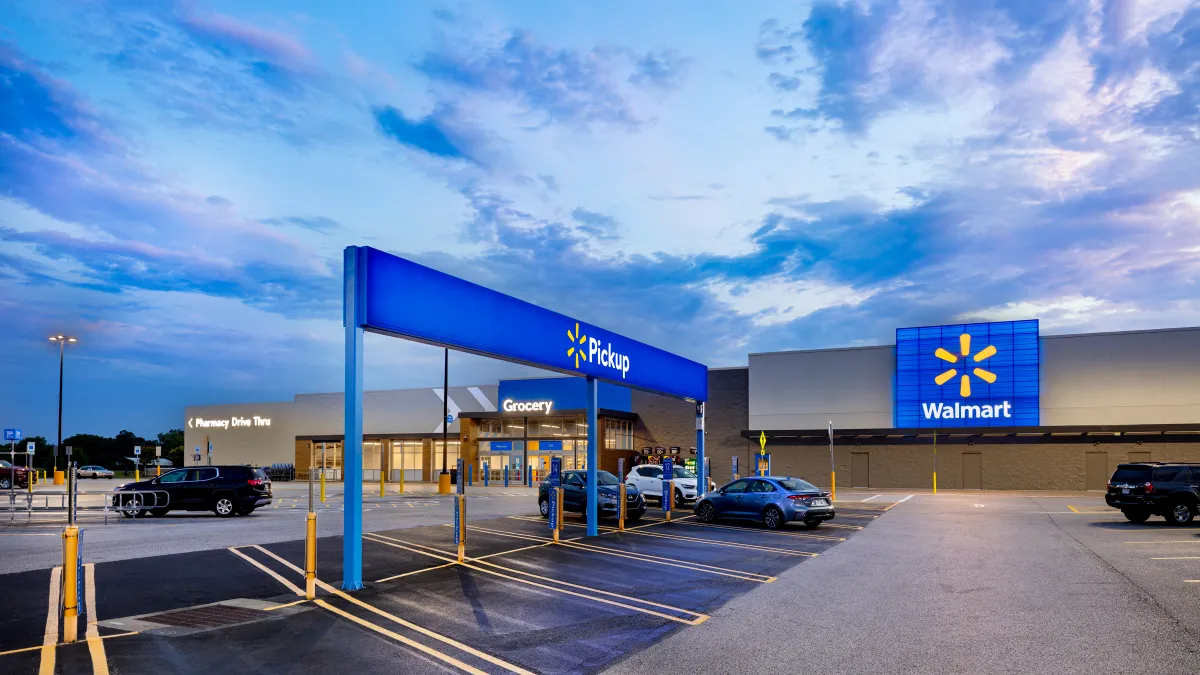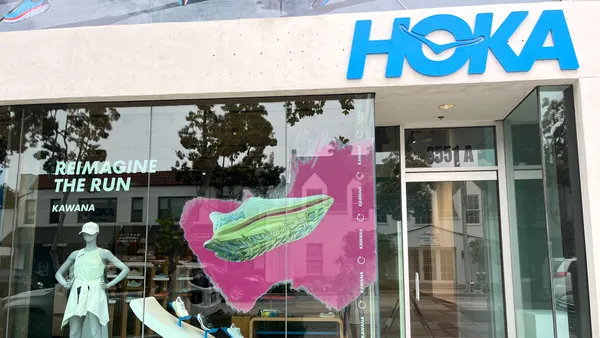Dive Brief:
- Walmart Media Group, the advertising arm of the retail giant, increased its number of net new advertisers by 40% this year as more marketers sought to reach shoppers closer to the point of sale. Its e-commerce business grew 79% in Q3 from a year earlier, helping to drive the same acceleration in Walmart's retail media business, whose omnichannel offering includes ad placements on its website, per a company blog post.
- "While the pandemic did not create the omnichannel customer, it solidified the expectation of a seamless in-app to in-store shopping experience," the company said. The Walmart Advertising Partners Program, the retail chain's self-serve platform launched in January, is now responsible for half of its sponsored products ads revenue.
- Walmart is among the retailers that are building media networks to help marketers stand out, not only in stores but also in their e-commerce channels that have become a significant source of revenue growth during the pandemic. Best Buy, CVS Pharmacy, Kroger, Target Stores and Walgreens also have created media networks to sell advertising.
Dive Insight:
Walmart Media Group's success at adding new advertisers indicates that its introduction of a self-serve ad portal at the beginning of the year likely helped more marketers get a foothold on its platform. The rollout of an application programming interface (API) for the Walmart Advertising Partners Program opened its digital ad inventory to automated online auctions, giving marketers and their agencies more flexibility in their media buys. Walmart followed that rollout with the introduction of "performance dashboards" last summer, giving marketers software tools to analyze data about their display and sponsored products campaigns in stores and online.
The growth in Walmart's media network indicates that marketers see value in the vast troves of data that retailers can collect about their customers who may be close to making a purchase. Marketers can typically harness this information in aggregate to improve their targeting of key audience groups in omnichannel campaigns. Such second-party data is becoming even more valuable as stricter privacy laws lead technology companies to enact measures that limit data sharing, such as ending support for third-party browser cookies and requiring opt-in consent to access device identifiers. Retailers aim to differentiate their media networks from platforms like Google and Facebook with in-store and digital shopper data that provides a more holistic view of shoppers' path to purchase.
Walmart also faces more competition in the marketplace for retail media networks as other chains started selling advertising. Walgreens this month introduced its Walgreens Advertising Group (WAG) as a way of leveraging its footprint of more than 9,000 stores and a loyalty program with more than 100 million members. CVS Pharmacy in August created its CVS Media Exchange to help marketers with their in-store and online campaigns. The market is expected to grow more crowded, with Forrester Research predicting last year that any retailer with more than 500 million unique website visitors is likely to create a media business.
Walmart's report about its advertising growth comes as the retailer continues to ramp up its e-commerce efforts. Amid the surge in e-commerce during the pandemic, Walmart overhauled its store operations to provide a more seamless integration with its apps and online store, including expanded services like curbside pickup for online orders. Walmart last week ran the first-of-its-kind shoppable livestream on social video app TikTok in the U.S. as part of its holiday marketing push.














